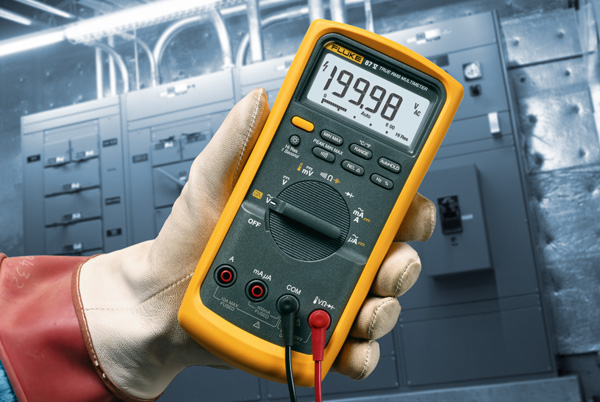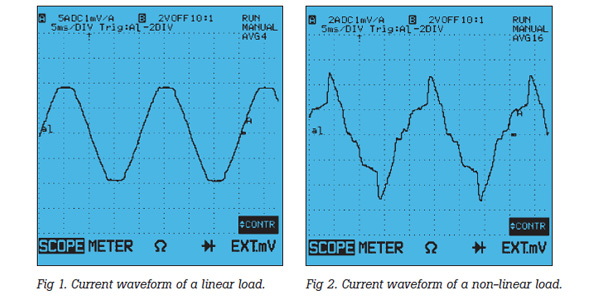It's one of the most common questions we get asked - what's the difference between a normal and a true RMS digital multimeter? Our blog has the answers you're looking for.

In modern industrial plants, offices and homes, measuring current accurately is more difficult than ever before. As we rely more and more on personal computers, adjustable speed drives and other equipment which draws current in short pulses rather than at a steady level, the accuracy and reliability of standard average-responding digital multimeters is compromised.
This means that the results you generate with a standard digital multimeter may, in many cases, not be entirely reliable. So what do you do to fix this? Simple - you invest in a true RMS digital multimeter.
To understand exactly what true RMS is, we need to first delve into the science behind average responding digital multimeters and linear/non-linear loads.
What Is An Average Responding Digital Multimeter, and Why Don't They Work Correctly?
When AC current is measured, the value measured is usually referred to as the effective heating or RMS (root mean square) value of the current. This value is equivalent to a DC current with the same heating value as the AC current which is being measured.
To measure this value, most people use an average responding digital multimeter. These meters rectify the AC current, determine the average value of the rectified signal and multiply the result by a factor (1:1). This factor represents the constant relationship between the average and RMS values of a perfect sinewave.
But what happens when the wave you are measuring isn't a perfect sinewave? Basically the relationship outlined above no longer applies - the wave is not perfectly shaped and can't be read in the same way, leading, in turn, to the accuracy of an average-responding digital multimeter no longer being reliable.
However if you're not actually testing on non-linear waveforms, a non-true RMS meter is still perfectly suitable for basic electrical measurements.
All About Linear and Non-Linear Loads
Linear loads - which are always composed of resistors, coils and capacitors - always drive a sinewave current, allowing average responding digital multimeters to make a measurement without a problem.
Non-linear loads, such as adjustable frequency drives and office equipment power supplies, draw distorted current waveforms. If you tried to measure the RMS value of a distorted current such as this, you could get a reading which is up to 50% too low!
If this happens, fuses on the equipment could blow despite you thinking your current draw is lower than the fuse, leaving you scratching your head and wondering just what the cause is.
What is True RMS, and How Does it Help?
When current is distorted, you need a meter which can measure the current reliably without delivering highly inaccurate results.
There's two ways of doing this - you could either check the waveform using a waveform capturing instrument, then only check the wave if it's a perfect sine wave. Or you could cut out the hassle entirely, purchase a true RMS digital multimeter and get results you can rely on.
True RMS is a measurement technique used by a digital multimeter which provides a real, effective value of AC current levels. It doesn't matter if the wave is distorted or perfect - a true RMS digital multimeter will adjust itself accordingly to always generate the results you're looking for.
In practice, this mode will save you time, effort and a lot of confusion while you're testing. If you're serious about investing in an all-purpose digital multimeter, true RMS mode should be a high priority on your shopping list.
Make Sure you Check the Crest Factor!
A true RMS meter, as good as it is, isn't completely without potential problems.
When considering a true RMS meter, you should also consider the crest factor. This tells you exactly how badly the waveform is distorted, and can be calculated by dividing the peak value of the current by the effective true RMS value.
When a sine wave is perfect, the crest factor is 1.414. As the wave distorts, this figure rises gradually. If your digital multimeter only had crest factor of 1.5, you'll still get inaccurate readings on waves above this threshold. If you purchase a multimeter with a crest factor of 3 or more, this should cover all measurements up to and including power distribution measurements.
Where Can I Buy a True RMS Multimeter?
At Tester.co.uk, we stock a huge range of both true RMS and average responding digital multimeters.



